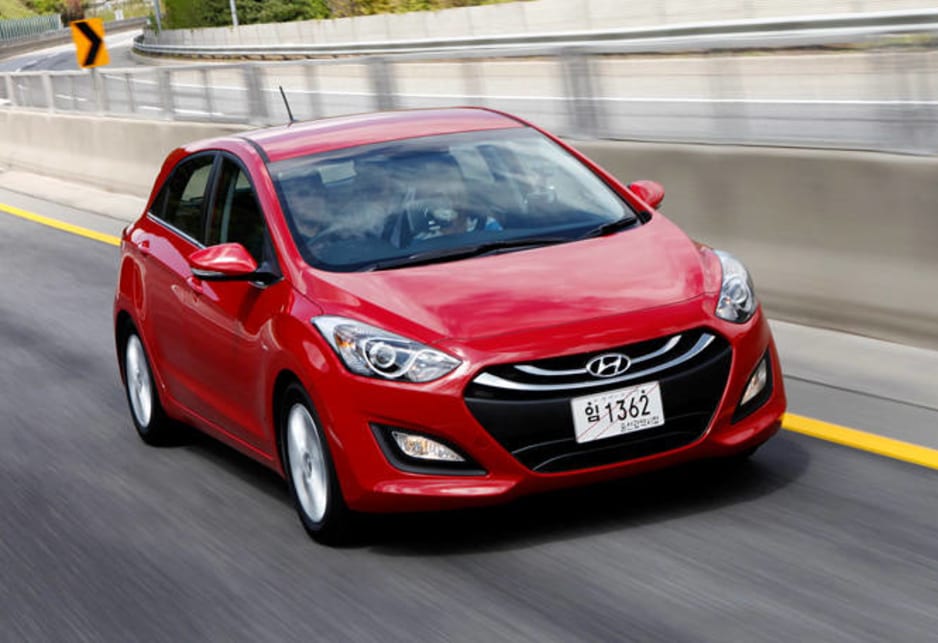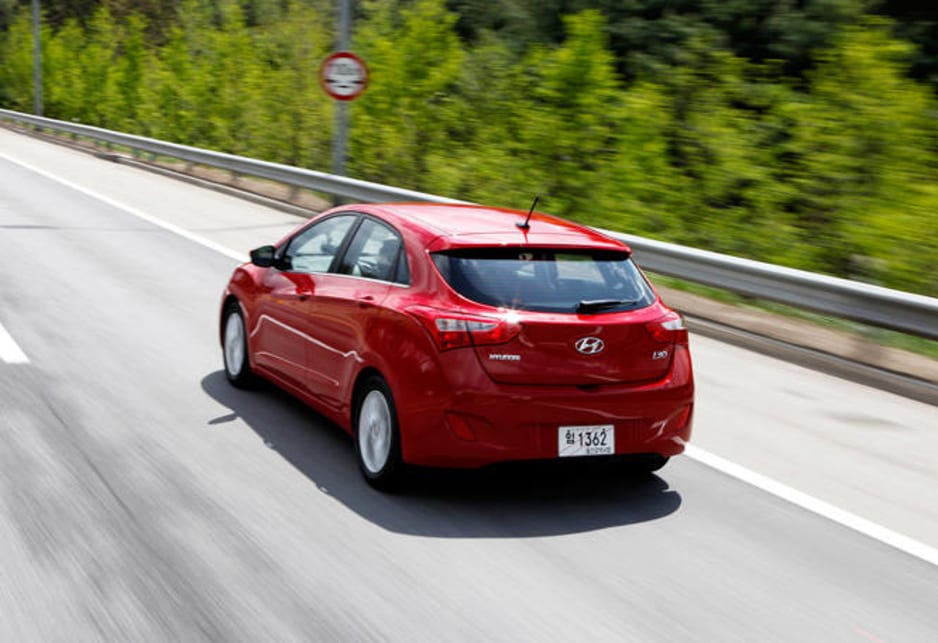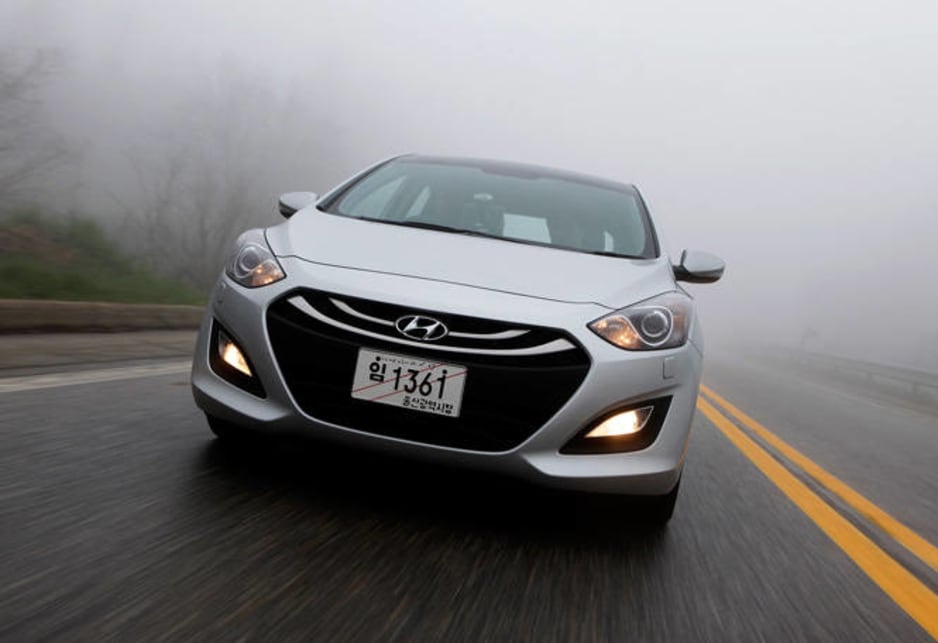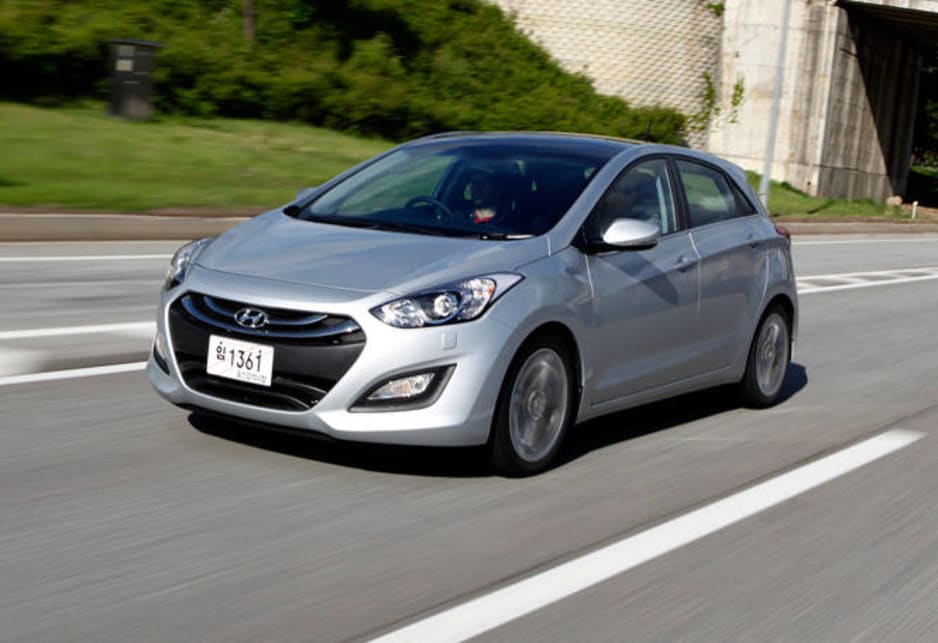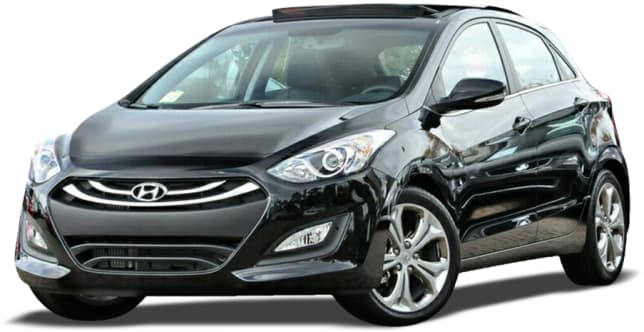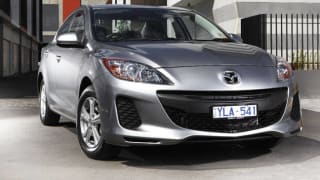In a sense, the i30 is the car responsible for the renaissance of Korea's solid but unfashionable car maker. With the launch of this car, the company turned a corner -- with a model that was suddenly desirable and as good as any of the Japanese fare.
The fact wasn't lost on reviewers, or the buying public either, who voted with their hearts and wallets. Carsguide was quick to recognise a quality product when it saw one awarding the i30 Car of the Year in 2007. It's a hard act to follow but here goes...
The new one
Think more of the same. The car is longer and wider than but sits lower than before giving it a sportier profile. The restyled body brings it into line with the "fluidic'' lines that have come to characterise the rest of the range. The front is sharper and more aggressive with a more dominant hexagonal grille and the rear looks far more contemporary with its new horizontally mounted tail lights.
Explore the 2012 Hyundai i30 range
They say the first i30 was benchmarked against the VW Golf. Be sure to check out the car from directly behind because I could swear those hips have been borrowed from the Mazda3 (another hugely successful car in this segment). In Europe, it's been panned for bearing too close a resemblance to Peugeot's 308 hatch.
The next-generation i30 is expected to arrive in Australia in mid 2012. Pricing and specification details will be released closer to the launch, but it is sure to come heavily optioned like other models, with Bluetooth, full iPod connectivity and the works.
No wagon
Sorry folks but the wagon is over and out. Although it represents 20 per cent of i30 sales, production of the i30cw has been switched from Korea to Hyundai's plant in the Czech Republic making it unavailable to our market (too far and too costly to bring here). This could change in the medium term however as initial demand for the new model eases freeing up the required production space on the line in Korea.
Diesel
The 1.6-litre CRDi turbo diesel carries over from the previous model, with 94kW of power and 260Nm of torque, along with the six speed manual. The big news here is the addition of a six speed auto that the replaces the hoary old four cog. The dash from 0-100km/h is said to 10.9 secs and the car has a top speed of 197km/h.
Petrol
The 2.0-litre petrol engine, however, has been replaced by a 1.8-litre unit which it turns out is a straight lift from the gorgeous Elantra. As such it has multi-point injection rather than the preferred direct injection that is the current trend.
In Europe the car is offered with a 99kW 1.6-litre direct injection engine but Hyundai obviously felt this was too modest for our roads and tastes. The 1.8 might be smaller than the engine it replaces but it actually produces more power though slightly less torque at 110 versus 105kW and 178 versus 186Nm.
Blue Drive
In the European market the diesel will also be offered in Blue Drive spec, with fuel saving technology such as Integrated Stop & Go (ISG), low-rolling resistance tyres and an alternator management system. With 94kW of power and CO2 emissions below 100 g/km the 1.6-litre diesel will feature a best-in-class power to efficiency ratio.
The drive
We had a crack at both the petrol and diesel models we’ll be getting here. The petrol car was surprisingly nimble and responsive. We gave it a right old caning up one twisting mountain pass -- which brought a cheer from the Koreans. Despite the damp at times foggy road conditions the car displayed plenty of grip, with an electronic stability system that is not intrusive.
With the addition of a six-speed auto, the diesel is a much better thing. But returning to it after a long spell it felt heavy in the front end and overly slow to respond in comparison. For long distance motoring, however, it's going to provide unbeatable fuel economy.
In Europe the car will be offered with Hyundai's new Flex Steer option. With three operating modes -- Comfort, Normal and Sport -- it provides varying levels of steering assistance and feedback to the driver.
Fuel consumption
Takes standard unleaded and has a 53-litre tank. Over the same distance as we crossed Korea the diesel returned 6.4 litres/100km while the petrol engined car returned a very credible 6.9 litres/100km. These are only our figures but the auto should bring down the official figure for the diesel compared with the current model.
Inside
Modelled on the i40 it's a much ritzier more contemporary look this time around, with greater use of soft touch surfaces. We're told there's more room inside the cabin, along with 10 per cent more luggage space too. The centre console is dominated by a large 7-in trip computer screen that's just crying out for a satnav unit.
Verdict
If you're a fan of the current i30 then you're going to like the new i30 even more.





